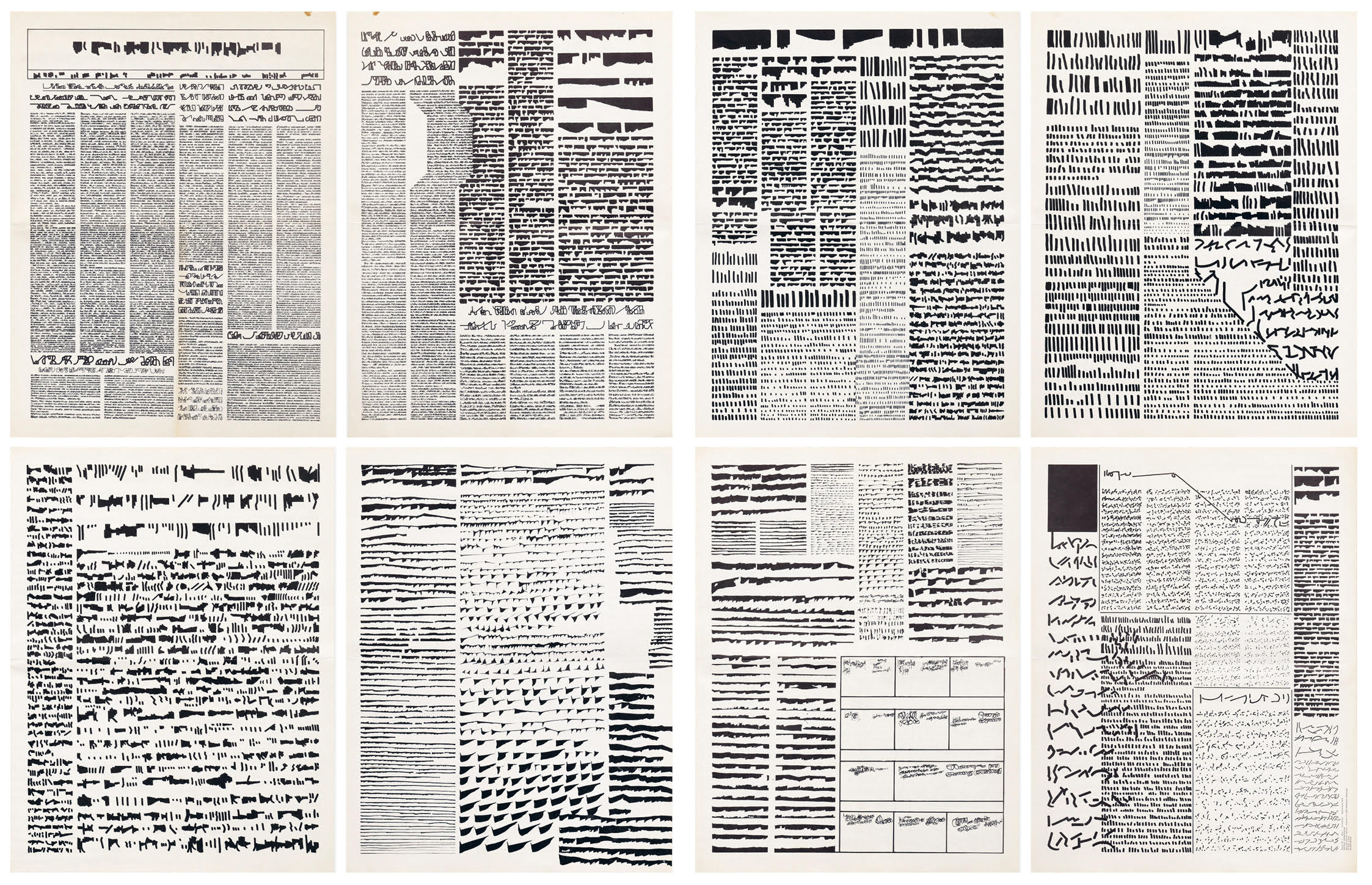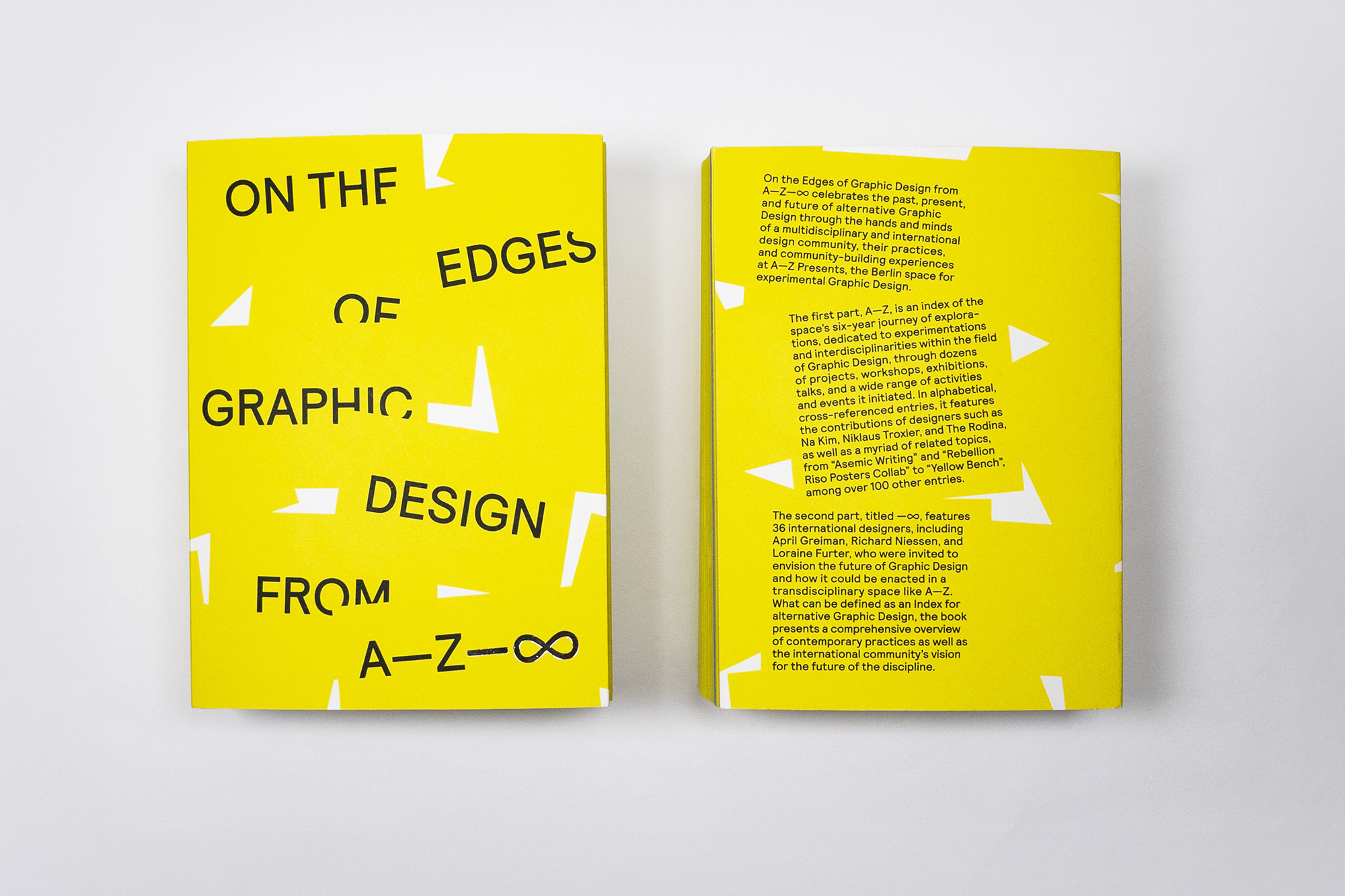This is an edited excerpt from Mirtha Dermisache: To Be Read, a publication accompanying a new exhibit in Berlin, conceived by the Freie Universität Berlin’s Cluster of Excellence “Temporal Communities: Doing Literature in a Global Perspective” in collaboration with A—Z Space for Experimental Graphic Design, oxfordberlin and the Legado Mirtha Dermisache, running from June 7 to August 11, 2024.
From the late 1960s onwards, the Argentinian conceptual artist Mirtha Dermisache (1940–2012) produced numerous publications containing marks that resemble writing. Although the pages of these works imitate familiar graphic formats, most famously in the case of her newspaper Diario 1: Año 1 (1972, with several later reprints), the signs filling these pages do not convey semantic content.
Mirtha Dermisache was born on 16 February 1940 in Lanús, a town on the outskirts of Buenos Aires. She first got a teaching degree and one in art education, and then attended the Escuela Nacional de Bellas Artes Prilidiano Pueyrredón, currently the Departamento de Artes Visuales of the Universidad Nacional de las Artes (UNA). In 1971, she began participating regularly in exhibitions and other projects, and became an active member of the contemporary art scene. At the same time, she opened the Taller de Acciones Creativas (TAC), a space for the teaching of different art techniques with the aim of developing the creative capacity and free graphic expression in adults. From 1975-81, she ran the public Jornadas del Color y de la Forma (Intensive Work Sessions in Color and Form). Music was a key part of her exploration and personal creative process, and she used it as a tool in her original teaching method.
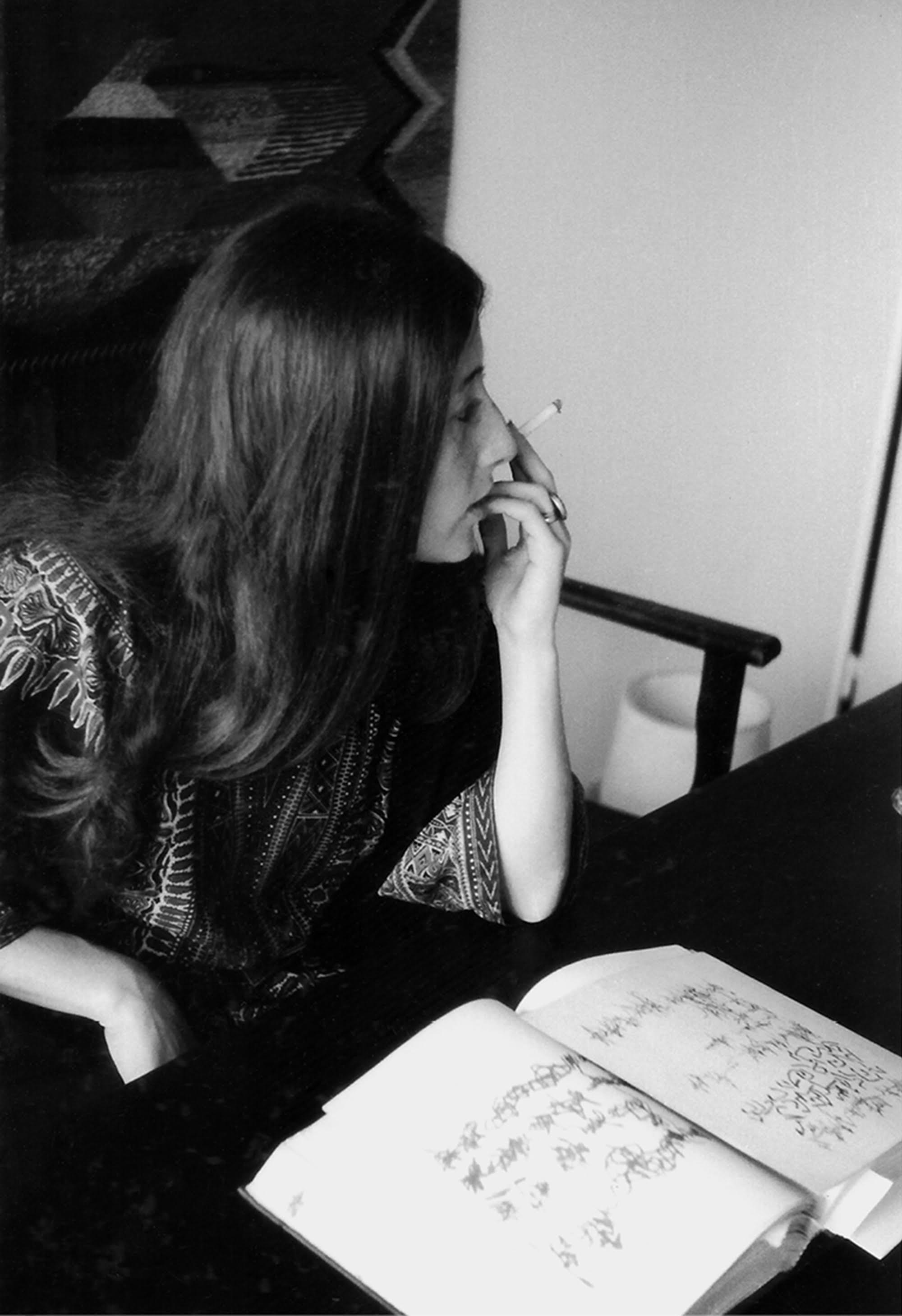
Mirtha Dermisache with her first artist’s book Libro Nº 1 (1967), Buenos Aires, 1967. © 2024 Legado Mirtha Dermisache.
In 1967, Dermisache produced her first book, the 500-page Libro n° 1. Other publications followed, always referencing well-known formats of communication – book, text, postcard, letter, bulletin, poem, comic and newspaper – which usually featured in the work’s title along with its respective number and the year in which it was produced. Conceptualism was flourishing in Buenos Aires in the late 1960s. In 1968, Jorge Glusberg founded the Centro de Arte y Comunicación (CAyC). Artistic appropriations of structuralist, semiotic and communicational theories gave rise to an ‘arte de los medios’ (mass-mediatic art), which aimed to locate the work ‘inside mass media itself’.1 Mirtha Dermisache’s citing of standard layout formats and her interest in various forms of distribution and display corresponded to these ideas. In March 1971, Roland Barthes wrote to Mirtha Dermisache that the ‘illegible writing’ in her publications ‘suggests to its readers, not exactly messages nor the contingent forms of expression, but the idea, the essence of writing’.2 Her work is therefore often described as illegible or ‘asemic writing’ – a term coined by Gillo Dorfles in 1974 in response to works by one of Dermisache’s contemporaries, the German-Italian artist Irma Blank (1934–2023).3
The asemic aspect, in Blank’s case, gestured towards the unsayable. In her Eigenschriften (Writings, 1968-73), the painterly marks, as she put it, ‘filled the emptiness [of being a foreigner]”4 after she had moved with her husband to Sicily in 1955 and felt herself to be suspended between languages.5 For Dorfles, Blank’s ‘asemic writing’ was based on ‘a sort of graphic orthography which uses a sign that is quite individualised […], but devoid and empty and purged of all explicit semantics since it is not constituted by – nor is it divisible into – “discrete signs”, into letters of some nevertheless modified alphabet, nor into altered or new-formed ideograms’.6
His insistence that ‘asemic writing’ was neither an alphabet nor a system of recurring letters and therefore was indivisible into ‘discrete signs’ can be traced back to a definition of the term ‘asemic’ by Jim Leftwich, who claimed: ‘A seme is a unit of meaning, or the smallest unit of meaning (also known as a sememe, analogous with phoneme). An asemic text, then, might be involved with units of language for reasons other than that of producing meaning’.7 Leftwich conceded that an ‘asemic’ text can only exist as ‘an ideal, an impossibility, but possibly worth pursuing for just that reason’.8
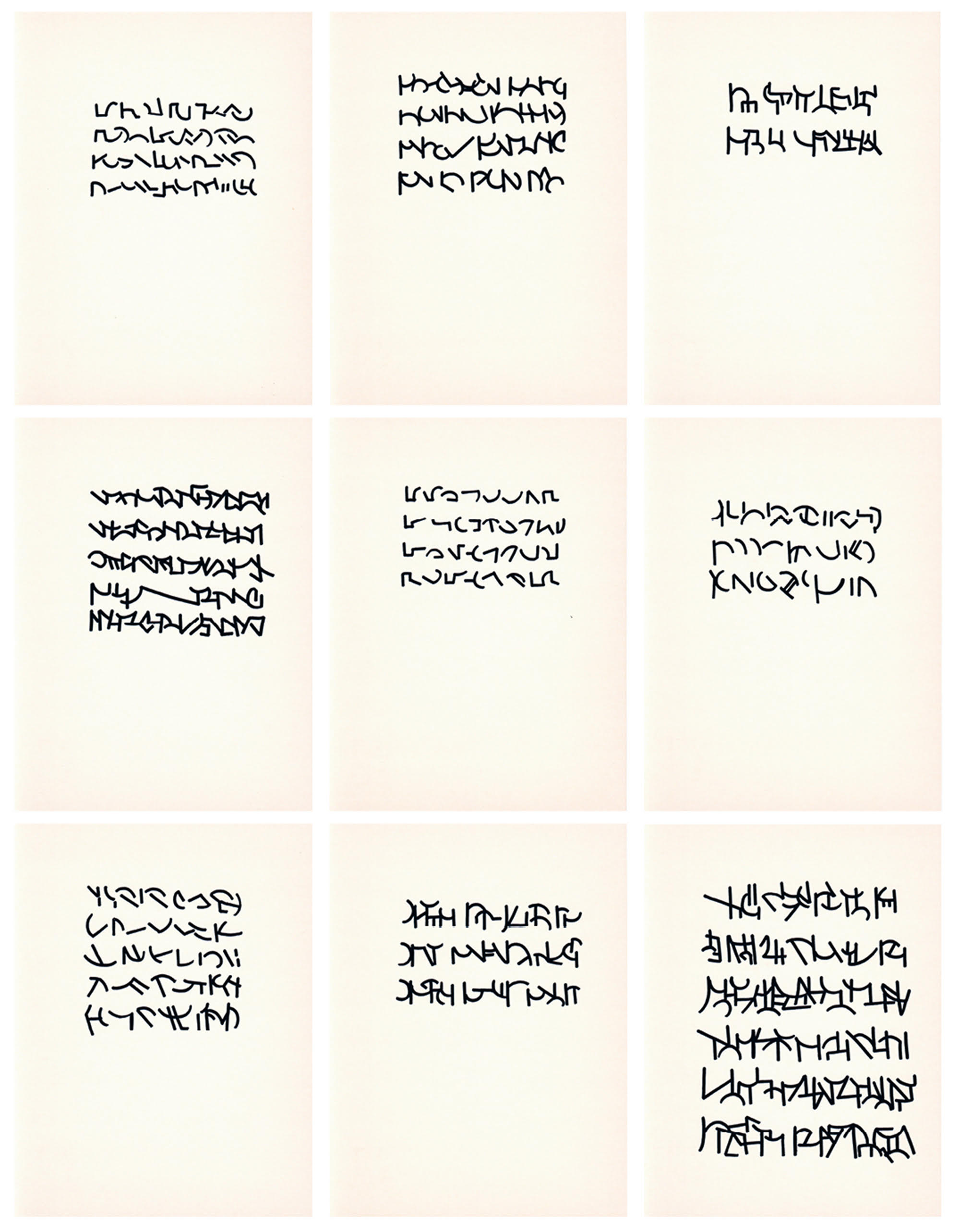
In his 2019 book Asemic. The Art of Writing, Peter Schwenger defines ‘asemic writing’ as ‘writing that does not attempt to communicate any message other than its own nature as writing’.9 With the rise of conceptualism in the late 1960s and 70s – the period when Mirtha Dermisache produced her first publications – contemporary art similarly turned inwards to investigate its own character and forms of practice, as evident in claims of art’s ‘dematerialization’ (Lucy Lippard, Oscar Masotta)10 and in statements such as that ‘being an artist now means to question the nature of art’ and that ‘in the philosophic tabula rasa of art, “if someone calls it art, […] it’s art”’ (Joseph Kosuth).11
More concretely, the term featured in Roland Barthes’ The Rustle of Language.12 Considering the extent to which mistakes in a text can be meaningful, he defines an ‘asemic word’ as one produced accidentally: ‘for example, instead of writing “officer”, I write “offiver”, which is meaningless’.13 He calls the resulting ‘asemic word’ a ‘pure signifier’, given that it ‘dismisses all meaning of the support text’ and concludes that, in this case, the reader, instead of deciphering, ‘gain[s] access, by the mistake, to the right of association’, that is to ‘make “offiver” explode in the direction of “offer”, of “olive”, etc.)’, thus creating new phonetic sounds or, in Barthes’ words, ‘a new music’.14
In Dissemination, Jacques Derrida defines the spacing between words as ‘asemic’, given that it facilitates meaning without signifying anything itself. ‘Asemic spacing’ for him is the ‘supplementary mark of the blank’ between words.15The fact that this asemic spacing is a universal phenomenon suggests that we see the history of ‘asemic writing’ as reaching back to ancient forms of Chinese calligraphy from the Tang Dynasty (618–907 CE) and forward into the 20th century literary avant-garde, including lettrists, artists and writers such as Henri Michaux and Cy Twombly.16 Expanding across various geographies, it extends beyond the human, as for example in ‘The Interspecies Library’ (curated by Oscar Salguero, New York) or in the AI-based literary and publishing practices of contemporary poet and programmer Allison Parrish and her generative novel of asemic text Ahe Thd Yearidy Ti Isa (2019).
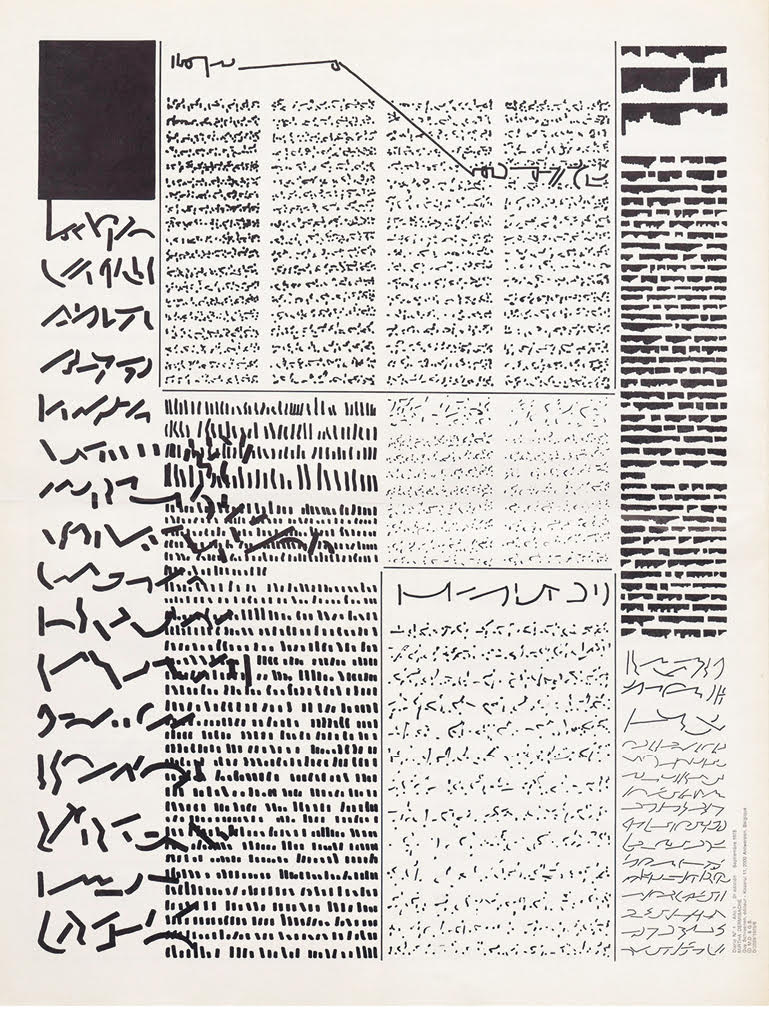
Mirtha Dermisache, Diario 1 Año 1 (last page), 1972/1995, fifth edition, 47 x 36.6 cm, offset print on paper. A second edition was published by the artist herself (Buenos Aires, 1973); a third edition by Guy Schraenen éditeur (Antwerp, 1975); a fourth edition (a four-page facsimile) by Silvia de Ambrosini, published in Artinf journal (Buenos Aires, 1995); and a fifth edition by Mirtha Dermisache (Buenos Aires, 1995). © 2024 Legado Mirtha Dermisache.
Diario N° 1 Ano 1, Dermisache’s best-known publication, is exemplary of the artist’s oeuvre as well as an exception within it. As with most of her works, its title references a common ‘communication format’, in this case a newspaper (‘diario’). Rather than referring to a specific publication circulating at the time, such as Clarín or La Nación – the two largest newspapers in Argentina – or to Río Negro, with its iconic title set in large capital letters, her newspaper only alluded to these media through the formatting of its elements. Similarly, the ‘writing’ refers to nothing but itself. Dermisache explained in an interview with Annalisa Rimmaudo and Giulia Lamoni that she made one exception to this refusal to signify, on the last page of Diario N° 1 Ano 1:
The only time I referred to the political situation in my country was in the Diario. The left column on the last page is an allusion to the dead of Trelew. This was in 1972. Outside of this massacre, which impacted me, as it impacted many, I never wanted to give a political meaning to my work. What I did and continue to do is develop graphic ideas regarding writing, which ultimately, I believe, have little to do with political events but with the structures and forms of language.17
The left column on the last page of Diario N° 1 Ano 1 features a large, black rectangle. The bold marks below stretch across 16 lines of varying length. Not limited to the designated space of the column, they transgress the space of the neighbouring column, partially overwriting its content. In disrupting the editorial layout of the page, Dermisache explores ways of typographically translating an event known as the ‘Trelew Massacre’: the mass execution of 16 political prisoners, mostly members of leftist and Peronist organisations, who tried to escape prison, but were recaptured. On a navy airbase near the city of Trelew, they were forced by marines to simulate a second attempt at escape, then shot down as they did so as revenge for the successful escape of some of their comrades during the initial prison break.18
It was a perilous act to explicitly dissent from the regime during the Argentinian military dictatorship of the 1970s. Instead, in works such as Diario – its newspaper format voided of the content for which it is usually a vehicle – Mirtha Dermisache employed conceptual tactics to engage with ‘the real’ and address its precarious status in these political circumstances.19 The illegibility of her publications constitutes a subversive gesture by mimicking the emptiness of state propaganda, divested of its coercive disinformation. Her persistence in continuing to ‘write’, publish and distribute her work under a military dictatorship and political oppression was itself an act of resistance.
The publication of “Mirtha Dermisache’s Illegible Publications” was funded by the Deutsche Forschungsgemeinschaft (DFG, German Research Foundation) under Germany’s Excellence Strategy in the context of the Cluster of Excellence Temporal Communities: Doing Literature in a Global Perspective – EXC 2020 – Project ID 390608380.
Hero image: Mirtha Dermisache, Diario 1 Año 1, 1972/1995, fifth edition, 47 x 36.6 cm, offset print on paper. A second edition was published by the artist herself (Buenos Aires, 1973); a third edition by Guy Schraenen éditeur (Antwerp, 1975); a fourth edition (a four-page facsimile) by Silvia de Ambrosini, published in Artinf journal (Buenos Aires, 1995); and a fifth edition by Mirtha Dermisache (Buenos Aires, 1995). © 2024 Legado Mirtha Dermisache.
-
Mari Carmen Ramírez, ‘Tactics for Thriving on Adversity: Conceptualism in Latin America, 1960-1980’, in: Global Conceptualism. Points of Origin, 1950s-1980s, exhibition catalogue, New York: Queens Museum of Art, 1999, pp. 53-71, here p. 66. ↩
-
Roland Barthes, letter to Mirtha Dermisache, Paris, 28 March 1971. Archive Mirtha Dermisache, Centro de Estudios Espigas at the Escuela de Arte y Patrimonio of the Universidad Nacional de San Martin (UNSAM) in Buenos Aires. Since 2018, Mirtha Dermisache’s archive was handed over to the Centro de Estudios Espigas, where it is available to the public for consultation: www.espigas.org.ar ↩
-
Gillo Dorfles, Le scritture asemantiche di Irma Blank, exhibition catalogue, Galleria Cenobio-Visualità, Milan, April 1974. See Dorfles, The Asemic Writing of Irma Blank, Engl. transl. by Nerida Newbigin, transcription of original Italian text by Tim Gaze, Coromandel Valley, Australia: Coromandel Valley Books, 2014. ↩
-
See Peter Schwenger, ‘The Draw of the Mark’, in: Critical Inquiry 50/2 (Winter 2024), pp. 335–51, here pp. 348f. ↩
-
Irma Blank, ‘Irma Blank in Conversation with Hans Ulrich Obrist’, in: Irma Blank. Blank, exhibition catalogue Culturgest, Lisbon, ed. by Johanna Carrier and Joana P. R. Neves, London: Koenig Books, 2019, p. 297. ↩
-
Ibid. ↩
-
Jim Leftwich, letter to Tim Gaze, dated 27 January 1998, cit. in Peter Schwenger, Asemic. The Art of Writing, Minneapolis/London: University of Minneapolis Press, 2019, p. 7. ↩
-
Ibid., p. 8. ↩
-
Schwenger 2019, p. 7. ↩
-
Oscar Masotta, ‘Depués del pop, nosotros desmaterializamos’, lecture delivered in July 1967 at the Instituto Di Tella in Buenos Aires, published in: Oscar Masotta (ed.), Happenings, Buenos Aires: Editorial Jorge Alvarez, 1967, p. 11; Lucy Lippard and John Chandler, ‘The Dematerialization of Art’, in: Art International xii/2, Feb. 1968, pp. 31-36. ↩
-
Joseph Kosuth, _‘Art After Philosophy’, in: Studio International _178, October 1969, pp. 134-137, p. 135. ↩
-
Roland Barthes, The Rustle of Language, transl. Richard Howard, Berkeley: The University of California Press, 1986 (first published in French, 1984). ↩
-
Ibid., p. 323. From this example, he distinguishes other mistakes by which meaningful words are created, such as: ‘if I write “ride” instead of “rude”, the new word exists’. ↩
-
Ibid., p. 324. ↩
-
Jacques Derrida, Dissemination, transl. Barbara Johnson, Chicago: University of Chicago Press, 1981 (first published in French, 1972), p. 258. ↩
-
See overview in Tim Gaze and Michael Jacobson, An Anthology of Asemic Handwriting, Minneapolis: Adelaide Books, 2013; Andrea Polaschegg, ‘Enigmatische Ästhetik. Zur Kulturgeschichte unlesbarer Schrift und ihrer künstlerischen Transformation’, in: Jutta Müller-Tamm, Carolin Schubert and Klaus Ulrich Werner (eds.), Schreiben als Ereignis: Künste und Kulturen der Schrift, Paderborn: Brill Fink, 2018, https://brill.com/edcollbook/title/53444. ↩
-
Mirtha Dermisache, cit. in: Annalisa Rimmaudo and Giulia Lamoni, ‘Entrevista a Mirtha Dermisache’, in: Mirtha Dermisache. Publicaciones y Dispositivos Editoriales [Mirtha Dermisache: Publications and Editorial Devices], exhibition catalogue, Buenos Aires: Pabellón de las Bellas Artes de la Pontificia Universidad Católica Argentina, 2011, online: https://hipermedula.org/2017/08/entrevista-a-mirtha-dermisache/ (Accessed 5 May 2024). ↩
-
See Cintia Mezza et al., ‘Mirtha Dermisache, Life and Work 1940–2012’, in:_ Mirtha Dermisache: Because I Write!, catalogue in conjunction with the exhibition _Porque ¡yo escribo! at the Museo de Arte Latinoamericano de Buenos Aires, edited by Agustín Pérez Rubio in co-edition with Fundación Espigas, Buenos Aires: MALBA, 2017,_ _p. 255-289, here p. 267. ↩
-
See passage on ‘Tucumán Arde’ in: Ramírez 1999, p. 55f. ↩

